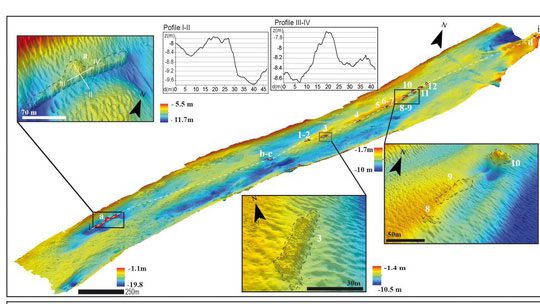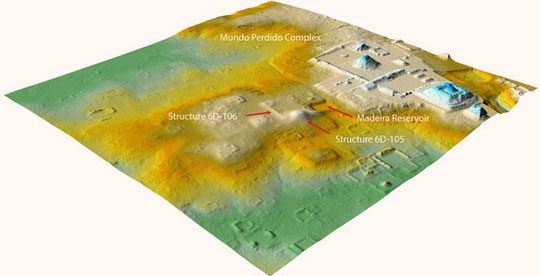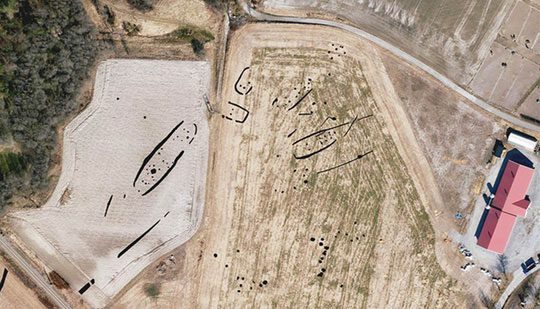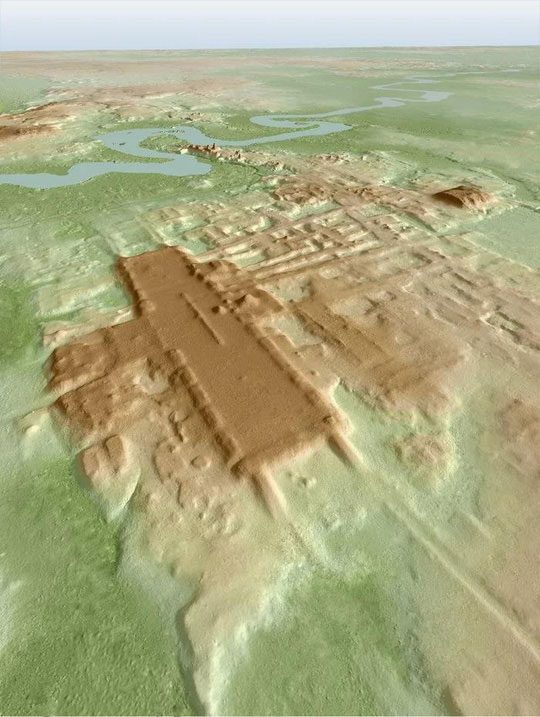The year 2021 marked a series of fascinating archaeological discoveries made possible by modern remote sensing technologies that can penetrate dense forests, revealing them like ghosts.
1. The Magnificent “Aquarium” in Venice

LiDAR reveals structures beneath the Venice lagoon – (Photo: ISMAR)
In addition to the stunning ancient city we see today, the Venice lagoon conceals another remarkable city, over 2,000 years old, built by the Romans.
Research led by the Institute of Marine Science (ISMAR) in Venice, published in Scientific Reports, indicates that beneath the water lies a large city with a beautifully paved main road, lined with numerous houses and facilities. The city also features a large commercial center and a port as big as a basketball court.
2. The “Miniature City” Hidden in the Hill

LiDAR image shows a cluster of mysterious architecture – (Photo: T. Garrison/PACUNAM)
A hill at Tikal – the capital of the Maya Empire and now a famous tourist destination in Guatemala – turns out not to be a natural hill. LiDAR remote sensing technology has uncovered a cluster of structures resembling a palace and temples, similar to Teotihuacan, which was another powerful empire not far from Tikal. It appears that these two cities had interactions and established a sort of “embassy” on each other’s land.
3. Excavation Surveys Reveal Viking Ship Graves and Treasures

Structures invisible to the naked eye, revealed as “ghosts” by ground-penetrating radar – (Photo: Norwegian Institute for Cultural Heritage Research)
A discovery announced in November revealed a series of ancient graves of Viking nobility in Gjellestad, Østfold, southern Norway.
According to the Norwegian Institute for Cultural Heritage Research, the area where a local resident intended to dig a drainage ditch contains many large ship graves, each filled with luxurious burial goods, as this was the burial method for the top nobility in Viking society. Besides the graves, remnants of longhouses were also found, indicating that this could have been an ancient administrative center.
Previously, due to the area’s history of archaeological discoveries, authorities used ground-penetrating radar to conduct surveys before allowing the drainage work to begin.
4. Hundreds of “Maya Ghosts” in Mexico

Stunning LiDAR image showing structures in an area of 85,000 km2 – (Photo: Takeshi Inomata)
A team of scientists led by anthropologist Takeshi Inomata from the University of Arizona used LiDAR to discover a religious complex spanning an area of up to 85,000 square kilometers in Tabasco and Veracruz, Mexico.
The structures are clearly of Maya origin, but they also bear the marks of the ancient Olmec city of San Lorenzo, dating back to around 1150 BCE, indicating that the two civilizations had a complex interaction.
These structures belong to a series of cities and towns built by the Maya as their empire expanded throughout South America. The study was published at the end of October 2021 in Nature Human Behavior.





















































